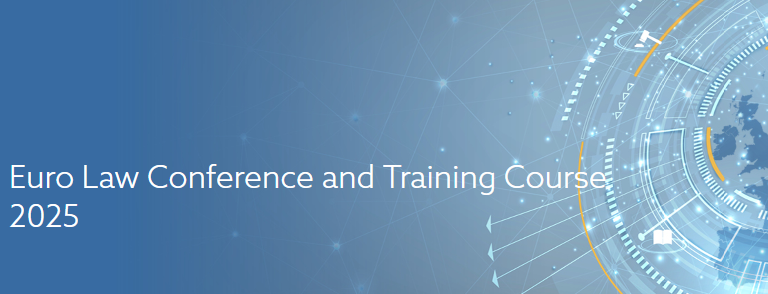Exploring the Future of Design Protection in the Digital World: Insights from Kei Enomoto at the CEIPI IP Business Talks
In the fast-evolving world of IP, where technology is advancing at an unprecedented pace, the conversation around design protection is becoming more critical. At the recent CEIPI IP Business Talks, Kei Enomoto shared her insights on this topic, shedding light on the challenges and opportunities of design protection in the digital age. Drawing from her extensive experience in the field, Enomoto discussed the complexities of protecting digital designs, the evolving legal landscape, and the critical role of innovation in the IP industry.
From Chemistry to Intellectual Property Law
Kei Enomoto’s journey into the world of IP law is a fascinating one. Originally a chemistry student in France and the UK, she earned her PhD in collaboration with Syngenta. However, her career path took a sharp turn when she realized that research was not her calling. As she humorously noted during the talk, her “catastrophic” lab skills made her consider a career change for the safety of herself and others. This pivot led her to the world of intellectual property, inspired partly by her sister, a trademark attorney, who suggested she explore patent law. After starting her IP career in a Parisian firm, Enomoto eventually moved to London, where she now lives with her German husband.
The Digital Design Landscape: Challenges and Opportunities
The heart of Enomoto’s discussion at the CEIPI talk focused on the intersection of design protection and digital innovation. She highlighted the rapid evolution of digital environments, including virtual reality (VR), augmented reality (AR), and the metaverse, which are creating new challenges for design protection. Traditional design laws, originally crafted for physical products, are now being tested by the dynamic and interactive nature of digital designs.
For example, Enomoto explained that in the UK and EU, design protection is not necessarily tied to a physical product. Unlike jurisdictions like Japan, where design registration might require specifying the product type (e.g., toys or vehicles), EU and UK laws are more flexible. This flexibility allows for the protection of digital icons, user interfaces (GUIs), and animated designs. However, this flexibility also introduces complexity, as legal frameworks must keep pace with technological innovations like animated and interactive designs.
_______________________________________________________
Panel discussion on Thursday, June 5 2025, 09:15 on the topic:
“Comparative Design Practice – Recent developments in the US, the UK, Europe and Japan”
with:
Hayley Talbert, Seed IP, USA
Yukiyo Nikaido, Soei, Japan
Kei Enomoto, Hoffmann Eitle
_______________________________________________________
Navigating the Legal Complexities of Digital Design
One of the most significant changes Enomoto discussed is the recent updates to the EU’s design regulations, which now explicitly include movement, transition, and animation as protectable design features. This change reflects a broader understanding of design in a digital context, where user experience often involves interactive and animated elements. However, this evolution presents challenges for both applicants and patent offices. For instance, while a physical product is relatively straightforward to capture in static images, animated designs require more nuanced representation.
Currently, the UK and EU IP offices still rely on static images for design registration, limiting applicants to a maximum of seven images. This limitation can be particularly restrictive for complex animations, as capturing the full essence of a design’s movement or interaction in just seven frames is often impractical. Enomoto shared an example from her own practice, where the inability to use video or more comprehensive digital formats for design submissions led to disputes over whether a design’s progression was adequately captured.
The Need for a Multi-Layered Approach to Design Protection
Enomoto emphasized the importance of a layered IP strategy for digital products. Given the limitations of design registrations, companies often need to use a combination of IP rights to fully protect their innovations. This approach might include patents for functional elements, trademarks for brand identity, and design rights for aesthetic features. She noted that relying on a single form of protection can leave companies vulnerable to infringement, particularly in rapidly evolving digital markets where design can be a critical differentiator.
The Impact of AI on Design and IP Protection
Artificial intelligence (AI) was another key topic in the discussion. Enomoto pointed out that AI is transforming design processes, enabling the rapid creation of thousands of variations in a fraction of the time it would take a human designer. However, this shift raises fundamental questions about ownership and protection. For instance, if an AI tool generates a design, who owns the rights? The programmer, the user, or the entity that trained the AI? These questions remain largely unanswered in the current IP framework, adding another layer of complexity for IP professionals.
Looking Ahead: The Future of Design in the Metaverse
As digital environments continue to expand, the importance of design rights will only grow. Enomoto’s insights at the CEIPI IP Business Talks highlight the need for ongoing adaptation in IP law to keep pace with these changes. She also stressed the critical role of collaboration and knowledge sharing among IP professionals, as the industry grapples with the challenges posed by digital transformation.
In conclusion, Enomoto’s talk was a powerful reminder of the dynamic nature of IP law and the need for forward-thinking strategies in protecting digital designs. As the lines between physical and digital products continue to blur, the IP community will need to remain agile, creative, and prepared to tackle the complex challenges of the digital age.
___________________________________________________
Stay tuned for more insights from leading IP experts and innovators as the CEIPI IP Business Talks series continues to explore the cutting edge of intellectual property law.




